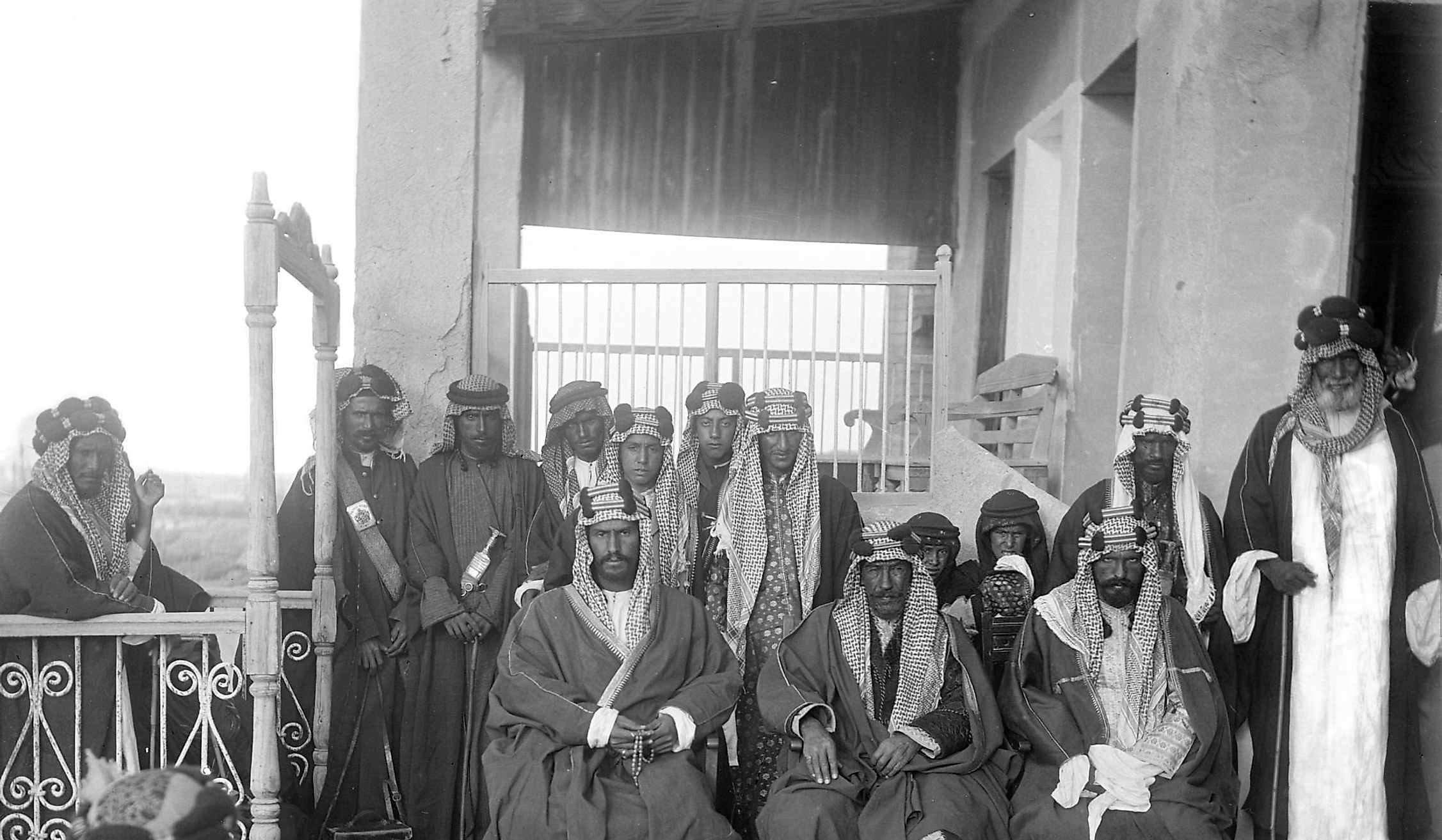
The Kings of Saudi Arabia
The Kingdom of Saudi Arabia was established on September 23rd, 1932 when Ibn Saud declared himself king after a series of military campaigns in the region. In total, the Saudi Arabia Kingdom has had seven kings, with Salman bin Abdulaziz Al Saud being the current king at 88 years old. As of 2022, however, Crown Prince Mohammed bin Salman is currently Saudi Arabia’s de facto ruler, serving as the prime minister, due to a decline in King Salman’s health.
Kings of Saudi Arabia, From 1932 Through Present
| King | Start of Reign | End of Reign |
|---|---|---|
|
1932 |
1953 |
|
|
1953 |
1964 |
|
|
1964 |
1975 |
|
|
1975 |
1982 |
|
|
1982 |
2005 |
|
|
2005 |
2015 |
|
|
2015 |
Present |
*Salman bin Abdulaziz Al Saud reigns as the current king but forfeited his political duties as prime minister in 2022. Mohammed bin Salman Al Saud took over his father’s role as prime minister in 2022. Although not the current reigning king, he is the de facto ruler.
Ibn Saud’s Rise to Power
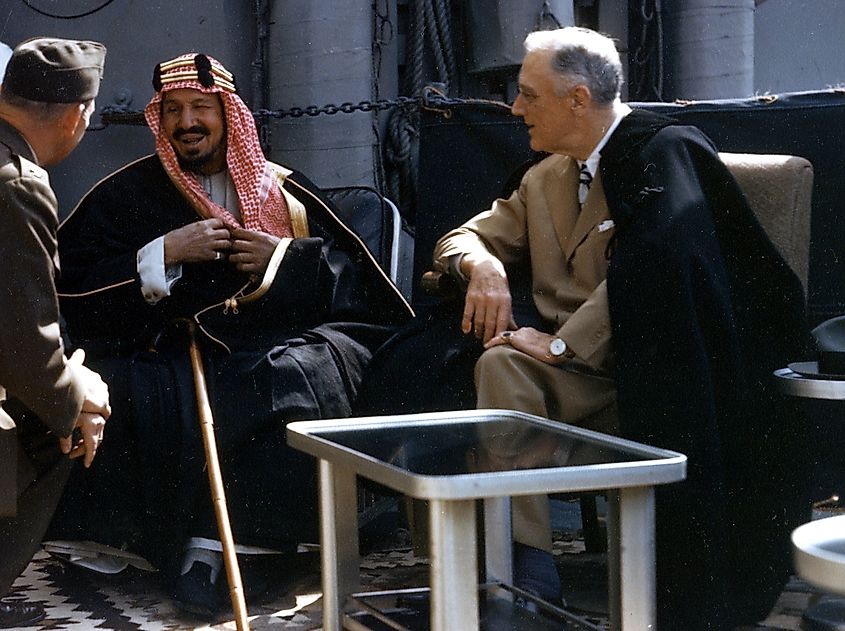
While the Saud family’s rule dates back to the 18th century, their rivals, the Rashidis, exiled them to Kuwait in the 1890s, leaving them temporarily powerless. In 1901, 21-year-old Abdulaziz bin Abdul Rahman Al Saud (abbreviated to Ibn Saud), succeeding his father, Abdul Rahman bin Faisal, ventured out of Kuwait, attempting to regain control of the Saud family’s land. In 1902, he successfully assassinated the Rashidi governor with a small group of 15 warriors, recapturing the capital of Riyadh. From 1902 through 1932, Ibn Saud ruled the land in a series of military campaigns, forming a treaty with the British Empire, overpowering the Rashidi and Ottoman empires, and expanding through the Najd and Hejaz territories.
In 1926, Ibn Saud became king of the Great Mosque of Mecca and the Hejaz, also ruling Njad as an administrative unit. In 1932, Ibn Saud unified the Hejaz and Njad into the Kingdom of Saudi Arabia to further strengthen his government and prevent the possibility of separatism. During this unification, he decreed himself King of Saudi Arabia, a decision supported by the British government.
Brief History Of Saudi Arabia’s Kings (1932 Through Present)
Ibn Saud (1932 Through 1953)
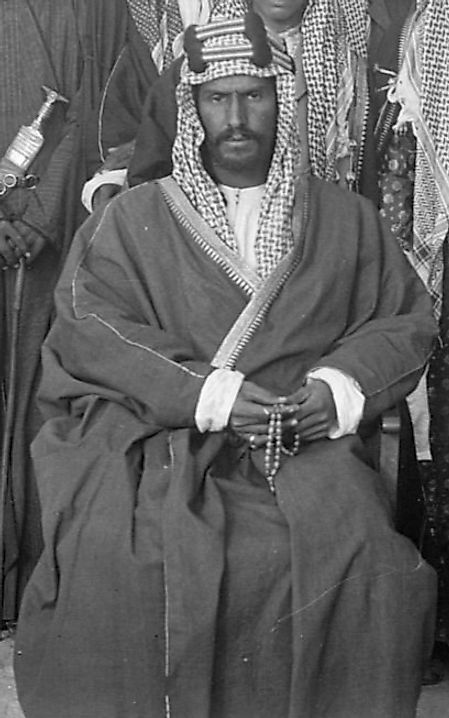
After declaring himself king in 1932, Ibn Saud spent the following years developing oil agreements between Saudi Arabia and the United States. In 1944, his government established Armaco (Arabian American Oil Company), a joint venture with American oil companies. During his rule, he also made many contributions to the young kingdom’s infrastructure systems, such as roads, communication, and modern technology. By the time of Ibn Saud’s death in 1953, Saudi Arabia had amassed tremendous amounts of wealth.
Saud ibn Abdulaziz (1953 Through 1964)
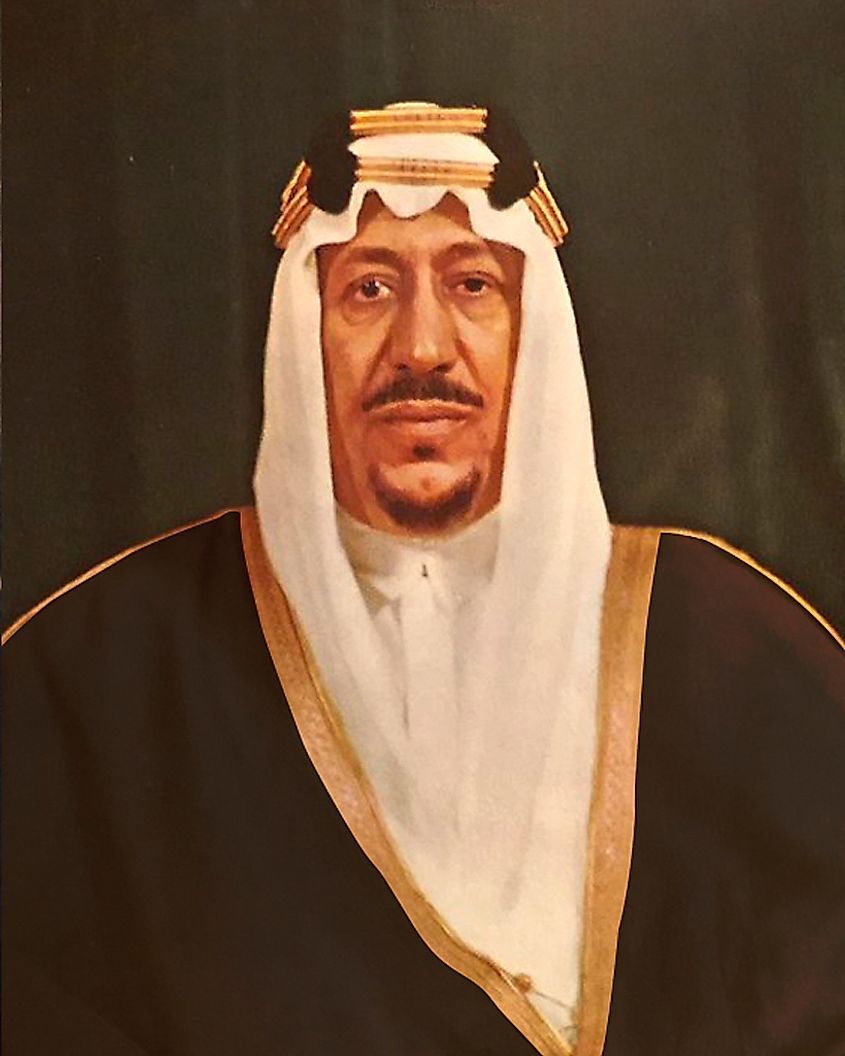
Ibn Saud’s eldest son, Saud ibn Abdulaziz, became the successive king in 1953. During his rule from 1953 through 1964, Saud improved the kingdom’s education system, establishing many schools and its first higher education institution, King Saud University, in 1957. He was also the first Saudi Monarch to visit the United States, prioritizing amicable relations with the US while simultaneously supporting other Arab countries during conflicts with Israel.
Faisal bin Abdulaziz Al Saud (1964 Through 1975)
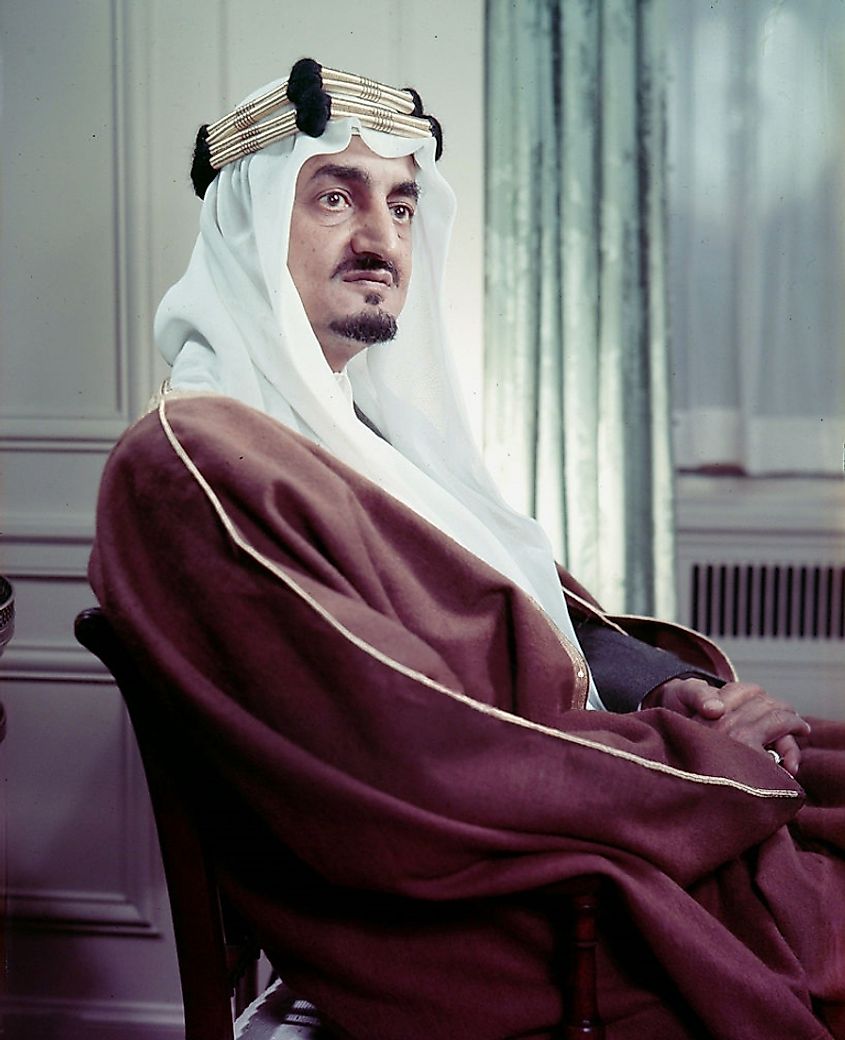
Faisal bin Abdulaziz Al Saud, Ibn Saud’s third son, became Saudi Arabia’s third king in 1964. Faisal’s policies were centered around anti-communism, pan-Islamism, and pro-Palestinianism. He attempted to limit Islamic religious officials’ power. King Faisal contributed to the 1973 oil crisis by cutting the Arab oil embargo and production in response to Western support towards Israel during the Yom Kippur War, resulting in increased oil prices and global economic turmoil. However, his reign was popular among Saudi Arabians due to his ability to stabilize the kingdom’s bureaucracy. His nephew, Faisal bin Musaid, assassinated him in 1975, and his half-brother Khalid ibn Abdulaziz became his successor.
Khalid ibn Abdulaziz (1975 Through 1982)
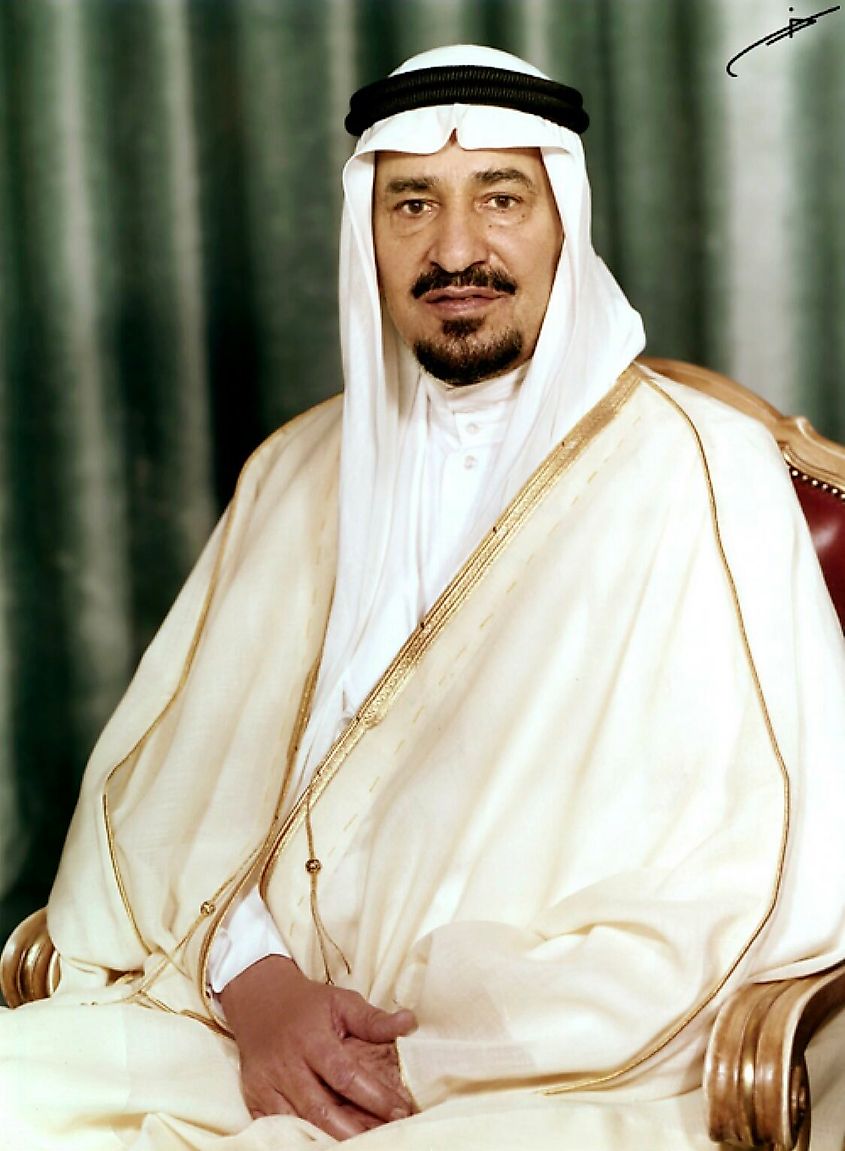
Khalid was king and prime minister from 1975 through 1982, with his reign marked by colossal growth in infrastructure developments largely due to increased oil revenues. Khalid was also a large contributor to the Gulf Cooperation Council’s formation (GCC) in 1981, an organization consisting of the United Arab Emirates, Saudi Arabia, Bahrain, Oman, Kuwait, and Qatar, which promotes economic prosperity and security between the six countries. Following Khalid’s death in 1982, his half-brother Fahd became king.
Fahd bin Abdulaziz Al Saud (1982 Through 2005)
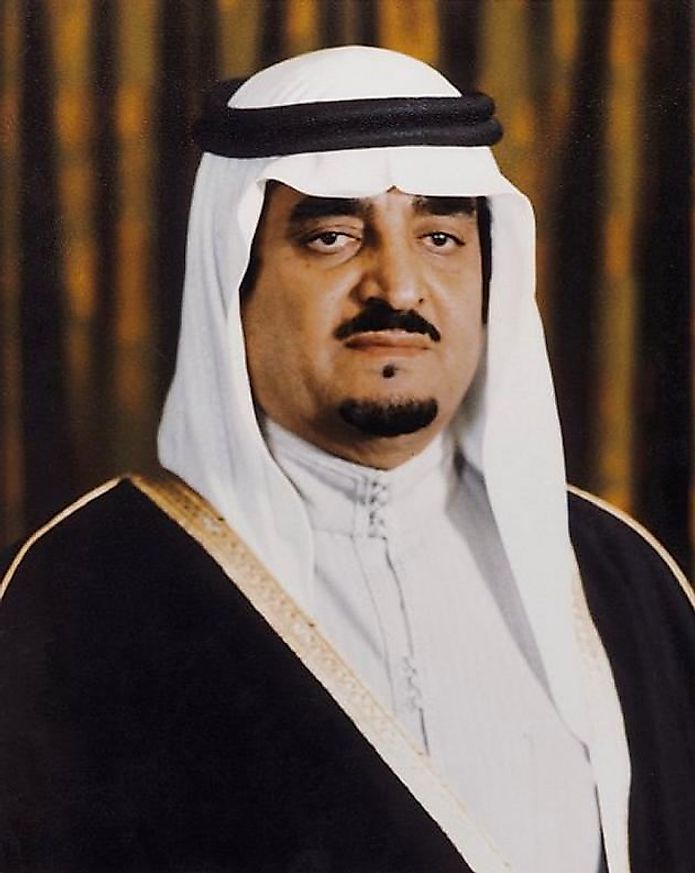
Fahd bin Abdulaziz Al Saud served as King from 1982 through 2005, with one of his most notable contributions being the creation and implementation of the Basic Law of Saudi Arabia, a 9-chapter charter comparable to a constitution. In 1995, Fahd experienced a debilitating stroke, resulting in him being unable to further carry out his duties. His half-brother, Abdullah, crown prince, became the de facto regent until Fahd passed away in 2005.
Abdullah bin Abdulaziz Al Saud (2005 Through 2015)
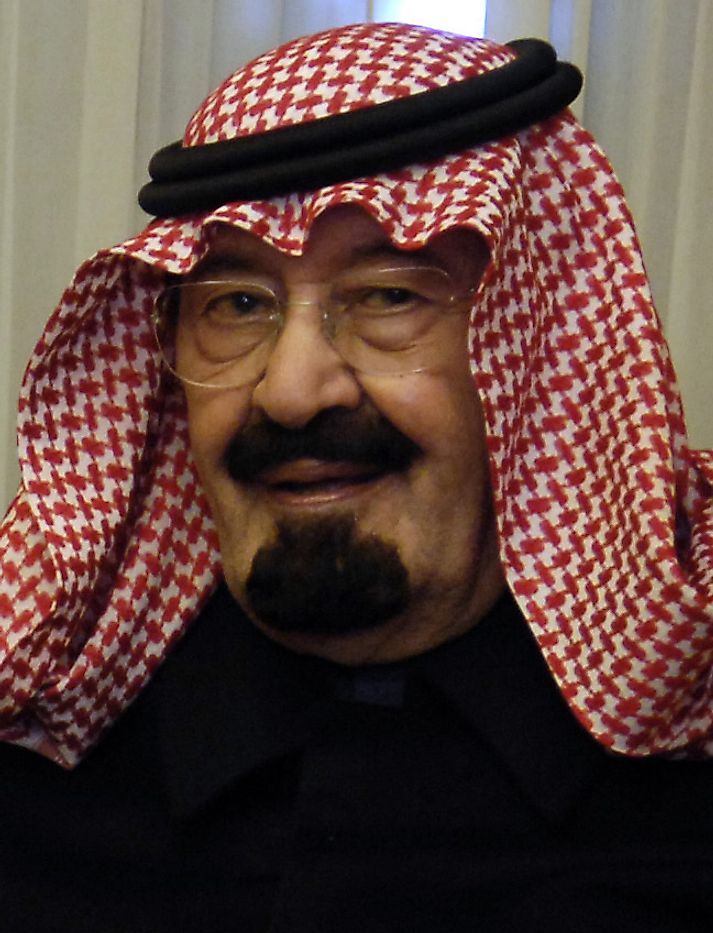
Abdullah bin Abdulaziz Al Saud became crowned king in 2005 following Fahd’s death. During his ten-year reign, he notably maintained close relations with the United Kingdom and the United States, purchasing billions of dollars of military equipment from the two countries. He also expanded women’s rights, giving them the ability to vote in municipal elections and participate in the Olympics. Abdullah condemned the September 11th attacks in the United States and, as an attempt to improve relations, proposed a peace initiative with Israel in 2002. Despite this peace proposal, tensions between Saudi Arabia and the US reignited following a US-led attack in Iraq during the Iraq War. At age 90, Abdullah passed away, and his half-brother Salman took possession of the throne.
Salman bin Abdulaziz Al Saud (2015 Through Present)
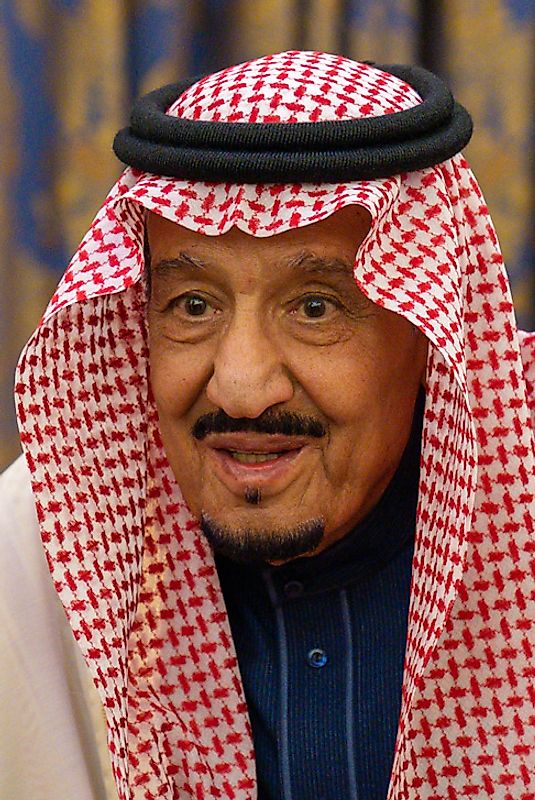
Salman bin Abdulaziz Al Saud has been king of Saudi Arabia since 2015 and served as prime minister from 2015 through 2022. Some of Salman’s most recognized initiatives include the Saudi Intervention during the Yemeni Civil War, Saudi Vision 2030, which aims to diversify Saudi Arabia’s economy and society, and a decree in 2017 that now permits women in Saudi Arabia to drive.
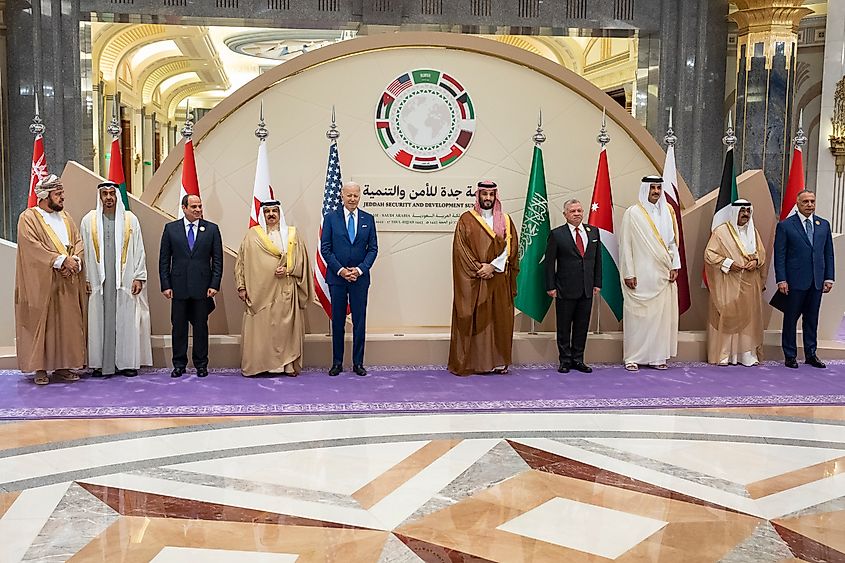
Salman’s seventh son, Crown Prince Mohammed bin Salman, became prime minister in 2022 due to King Salman’s poor health. Mohammed bin Salman is also assumed to be the country’s de facto ruler. As ruler, Mohammed bin Salman's policies have focused on reducing reliance on oil and strengthening Saudi Arabia's relationships with Russia and China.
Final Thoughts
The history of the Kingdom of Saudi Arabia is marked by significant milestones and influential rulers, starting with its founding by Ibn Saud in 1932. Each successive king has contributed to the nation's development in various ways, from forming crucial oil agreements and infrastructure projects to expanding education and women's rights.
As the current king, Salman bin Abdulaziz Al Saud, faces health challenges, Crown Prince Mohammed bin Salman leads the country, continuing the legacy of transformation and modernization set by his predecessors.











